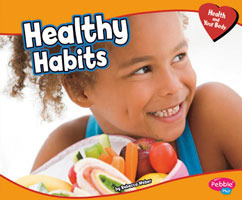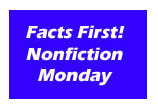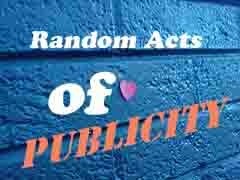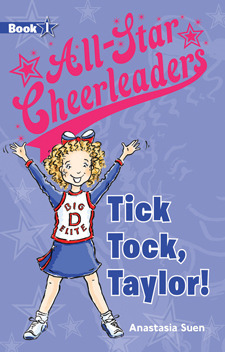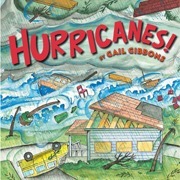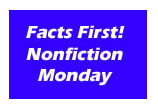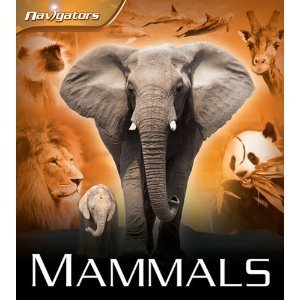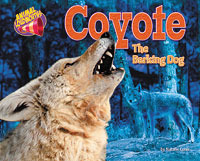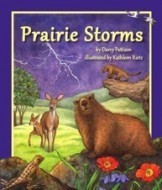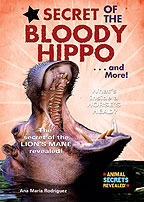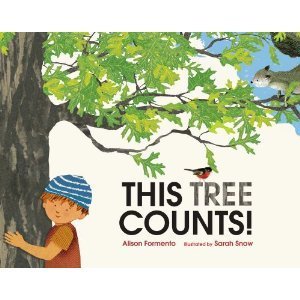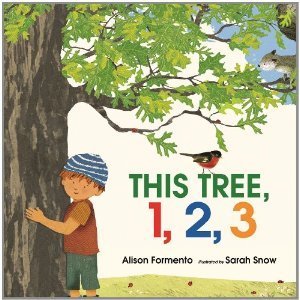Shirley Smith Duke's Blog, page 8
September 5, 2011
Healthy Habits
It's Nonfiction Monday at Wrapped in Foil. Visit there to see all the other gems from the Internet.
By Rebecca Weber
Health and Your Body Series
Capstone/Pebble Plus
ISBN # 9781429666114
Nonfiction
Grades PreK-2
"Our bodies need things every day to stay healthy. The right food, enough sleep, and exercise are all important. How can you be healthy today?"
Healthy Habits, a book for early readers, sets a positive, cheerful tone while explaining in simple language the basics of good health. The first section gives general suggestions for maintaining healthy habits without coming off as preachy. It addresses food, hygiene, teeth, exercise in the form of play, drinking water, healthy snacks, and the value of sleep. The book ends with a few interesting, general facts, and includes a glossary, read more section, internet sites, and an index.
This information is important to the preschool ages and young children in the early grades. The information seems like it should be common knowledge, but many children don't know or can't articulate these facts, and this book provides the information on a level they can understand and learn. The bold, bright photographs of kids having fun doing the suggested activities supports the text and gives context clues to early readers.
This book would make a wonderful introduction to good health and habits for children in the first few weeks of school and a valuable reminder throughout the year. It would be useful for a health unit and a good introduction to all forms of hygiene, an important part of the early grades with its sneezing, colds, and close contact among the children. The readability of the text can empower the students and get the message across as they read the words themselves. And best of all, it's a fun book.
Activity
Using words or pictures, have each student make a healthy habits chart. Put the chapter titles across the top and the days of the week down the side. Each day as you journal or have a warm-up activity, ask the students to put a symbol (or checkmark) in each column that they have done. Keep it private, but use the chart to make the children more aware of healthy habits. You may want to include other actions the kids think of.
This site has charts about healthy habits.
Here are some sample lessons relating to healthy habits.
This site has additional educator tips for healthy habits.
This site has worksheets relating to staying healthy.
National Science Standards: Growth and development of organisms.
Book provided by Capstone Press.








Healthy Habits and a Bonus Post–Tick Tock, Taylor
By Rebecca Weber
Health and Your Body Series
Capstone/Pebble Plus
ISBN # 9781429666114
Nonfiction
Grades PreK-2
"Our bodies need things every day to stay healthy. The right food, enough sleep, and exercise are all important. How can you be healthy today?"
Healthy Habits, a book for early readers, sets a positive, cheerful tone while explaining in simple language the basics of good health. The first section gives general suggestions for maintaining healthy habits without coming off as preachy. It addresses food, hygiene, teeth, exercise in the form of play, drinking water, healthy snacks, and the value of sleep. The book ends with a few interesting, general facts, and includes a glossary, read more section, internet sites, and an index.
This information is important to the preschool ages and young children in the early grades. The information seems like it should be common knowledge, but many children don't know or can't articulate these facts, and this book provides the information on a level they can understand and learn. The bold, bright photographs of kids having fun doing the suggested activities supports the text and gives context clues to early readers.
This book would make a wonderful introduction to good health and habits for children in the first few weeks of school and a valuable reminder throughout the year. It would be useful for a health unit and a good introduction to all forms of hygiene, an important part of the early grades with its sneezing, colds, and close contact among the children. The readability of the text can empower the students and get the message across as they read the words themselves. And best of all, it's a fun book.
Activity
Using words or pictures, have each student make a healthy habits chart. Put the chapter titles across the top and the days of the week down the side. Each day as you journal or have a warm-up activity, ask the students to put a symbol (or checkmark) in each column that they have done. Keep it private, but use the chart to make the children more aware of healthy habits. You may want to include other actions the kids think of.
This site has charts about healthy habits.
Here are some sample lessons relating to healthy habits.
This site has additional educator tips for healthy habits.
This site has worksheets relating to staying healthy.
National Science Standards: Growth and development of organisms.
Book provided by Capstone Press.
This is Random Acts of Publicity Week and here's my choice:
All-Star Cheerleaders (Book #1) Tick Tock, Taylor
Chapter Book
Will Taylor be able to do the moves fast enough to help Glitter take first place? Teammate Sophia doesn't think so, but readers of this first-ever series for young readers about competitive cheerleading will cheer, "Big D Elite, Can't Be Beat!"
Each book in the All-Star Cheerleaders series will follow one member of the Glitter squad as they practice, compete, make new friends, learn new moves and most of all … have fun!
This is the first book in the series by Anastasia Suen and should interest any early reader who is ready for chapter books!








August 30, 2011
HURRICANES!
Hurricanes!
By Gail Gibbons
Holiday House, 2009
ISBN #9780823422333
Grades K-3
Nonfiction picture book
"The winds are howling, the rain is pouring down, violent waves are crashing onto the shore. A dangerous spinning storm has formed over tropical waters. It is a hurricane."
Truthfully, this book was next in line for my blog post this week. This is the time of year when hurricanes become more active, so I had it set to go.
Gibbons' book is a terrific way to show children what happened and give an explanation of this force of nature. Knowledge about a scary event is a good way to better understand it and this book is a good follow-up to way to Hurricane Irene.
Hurricanes! explains what a hurricane is and how it forms over tropical waters. She mentions the damage that can occur, but in a non-threatening manner. The text goes on to related how storms are labeled and the significance of the categories they are given. She discusses some of the better known hurricanes before going on to show how they are forecast and tracked as they move toward the U.S. The book concludes with actions to take for an approaching hurricane and includes more hurricane facts. A small sidebar gives the national weather website to learn more.
The art is Gibbons' typical bright, page-filled color done in a cartoon-like style. This book would be useful for a study of weather, during hurricane season, a storm unit, or before or after an actual hurricane. It's interesting reading for young children and provides a great deal of easy-to-understand information.
For a limited time, Sylvan Dell has the e-book Ready, Set, Wait! available to read. It's about what animals do before a hurricane and has activities at the back–something available in every Sylvan Dell book.
Activity
As a group, make a list of words from the book that talk about hurricanes, or use the list of words from the Holiday House worksheet. Have the students scramble the words and exchange papers. Then unscramble the vocabulary words.
Follow up with an illustrated picture dictionary of hurricane vocabulary words.
For educator information, try the NASA Earth Observatory site for more information about hurricanes form.
A link from the NASA site gives an explanation of hurricane anatomy with a diagram of a hurricane, explanation of the levels, and pictures of its power.
Amazon has the book available in paperback.
National Science Standard: weather and climate
Book provided by publisher for Librarian's Choices review committee.








August 23, 2011
MAMMALS
It's Nonfiction Monday at Capstone Connect. Check out all the great nonfiction posts.
MAMMALS
by David Burnie
Navigators Series
Grades 4 to 7
ISBN #978-0-7534-6610-0
Middle grade nonfiction
"The first mammals lived side by side with the dinosaurs, more than 200 million years ago. Dinosaurs died out, but mammals survived to become the most successful animals on Earth. They vary hugely in size and live on land, in water, and even in the air. But all mammals share three special features—they are warm-blooded, they have hair or fur, and they raise their young on milk."
Mammals begins with the definition of the characteristics that make a mammal, but it continues with so much more. Each spread of the 48 pages addresses the beginning of life through the varied ways of existence of a range of mammals and their characteristics specific to each group. The text on each spread addresses the specific information and includes fascinating sidebars about those mammals relating to the topic. The "Strength in Numbers" spread addresses rodents, but sidebars provide information about beavers, capybaras, rats, and ground squirrels. Small captions explain each of the numerous photographs and one quote relating to the topic is included.
"Follow the Leader" shows a herd of wildebeests across the Serengeti Plain while "A Better Bite" grabs the reader's attention with a huge photo of a mountain lion—tongue, teeth, and snarl. Comparative skulls illustrate different kinds of jaws and the teeth they contain. The book ends with "Mammals In Danger" and what is being done to preserve these mammal species.
Back matter includes a glossary, index, and suggestions for further investigation by the reader in museums, documentaries, and conservation groups. The photos are a mix of large and small and engaging as well as adding information to the narrative text.
This book will appeal to younger readers who may marvel at the photos and read to learn more as well as the middle grade reader who can pore over each mammal group with a mature looking book. It would be a good way to introduce mammals and their characteristics and provoke interest in the different mammal groups and characteristics. It's a fascinating book for elementary and middle school libraries.
Activity 1
Look up placental, marsupial, and monotremes in the mammal group. Develop a way to compare these different mammal groups and show why they are all mammals. Ideas may be shown using a PowerPoint presentation, an art project, or a classification chart.
Learn more about mammals here.
The San Diego Zoo site has excellent mammal information.
Activity 2
Investigate a selected mammal and find out specific adaptations the species has developed to aid in its survival.
This site has individual mammal information.
Here's more mammal information.
Activity 3
Look up endangered mammals and write an explanation of why that mammal is endangered and what is being done to protect that species.
Roberta at Wrapped in Foil suggested that the award-winning Can We Save the Tiger would be a good book to read for this activity.
Here's good information about endangered mammals.
Learn more about endangered mammals here.
National Science Standard: structures and processes; biological evolution
Book provided by Kingfisher








August 17, 2011
STEM Friday
Welcome to STEM Friday. Mr. Linky and I aren't linking yet, so add your name, link, and book in the comments and I'll post them throughout the day.








August 16, 2011
COYOTE The Barking Dog
By Natalie Lunis
Bearport, 2012
Animal Loudmouth Series
ISBN #978-1-61772-279-0
Grades K-3
Nonfiction
"It is nighttime in the woods. A few short, squeaky yips and yaps come from a coyote somewhere in the distance. Soon more yipping and yapping starts up in another spot. Before long, other voices join in, and the yips turn into howls."
Coyotes have a special place in my heart. One of my Austin College professors, the late Dr. Howard McCarley, studied wolves and coyotes. On a field trip with a class I took, he demonstrated a coyote call. I could hardly keep from laughing. However, I tried it, and got a terrific response from the local coyotes. He invited me to work accompany him on his research and I managed to get the coyotes to respond almost every time. He recorded the sounds for further study. Turns out my college-aged voice was quite similar to coyote pups. It was one of the more interesting side aspects of college! As soon as I saw this book, I knew I had to blog about it.
Coyote starts with the sounds the animal makes, explaining the purpose and significance of the calls. Habitat, hunting, team work, pups, and living with coyotes are included in the narrative text. The book explains the prevalence of coyotes and their ability to adapt to many kinds of habitats. Short captions explain the photographs.
Excellent photographs of coyotes in action liven up the spreads and break up the information. In keeping with the series, the decibel levels of coyote calls are included with a range of other noises on a page titled Sound Check.
Back matter includes a picture glossary, an index, read more, and a short author blurb. This book makes me want to howl with joy—be sure to check it out.
Activity
Look up statistics of coyotes, foxes, and wolves. Create a way to compare the sizes of these related animals and add specific facts about where they live, what they eat, how they hunt, color, and number in the litter. Identify ways they are similar and ways they are different.
This site has interesting information about coyotes.
Read more coyote facts here.
National Geographic has good information.
Check out gray wolves here.
National Geographic has fox information here.
National Science Standard: growth and development of organisms; social interactions and group behavior
Book provided by Bearport during TLA.








August 9, 2011
Prairie Storms
By Darcy Pattison
Illustrated by Kathleen Rietz
Sylvan Dell, 2011
ISBN: 9781607181293
Ages 4-9
Picture book
"Low, thick clouds dump snow, covering the prairies. Whistling winds shape and mold the snow into drifts and hollows. The prairie chicken claws into a drift, digging a winter roost."
Darcy Pattison, known for her fiction, changes her writing direction in this book about animals, the prairie, and the variety of weather that blasts the prairie grasslands. Tracing the weather month by month, Prairie Storms features a different animal on each spread as it survives, aided by its specific adaptations to this habitat. The language is lovely and engaging for young children.
Soft art by Rietz portrays the animals in a realistic manner within their prairie environment and surroundings. As in other Sylvan Dell books, this book has a six page set of activities relating to prairies, animals, and weather that will encourage discussion and opportunities to reread the book. The book would be a good one for story time, studies of habitats, weather, or animals.
Activity
Find out more about each of the animals named in the book. Divide the children into groups and have them look up interesting facts about the animal. Make a poster showing a picture of that animal, the facts, and the animal in the month's prairie weather from the book. Present the information.
National Geographic has good animal information.
The website for Prairie Storms gives a number of activities and lesson plans that accompany the book.
The site also has a coloring page link.
National Science Standard: organisms in their environment
Ebook provided by author Darcy Pattison








August 2, 2011
A Place for Fish
By Melissa Stewart
Illustrated by Higgins Bond
Peachtree, 2011
ISBN # 978-1-56145-562-1
Nonfiction picture book
Ages 6-10
A Place for Fish is the fourth book from Peachtree in this series by Melissa Stewart. The book tells of the environmental threats to fish and how the actions of human affect fish, along with ways people can help stop harmful actions that threaten fish and change them to improve the habitats of fish. Sidebars fill in specific fish information such as how fins help them swim, why certain fish are nearly extinct, and interactions of shelter and how their demise affects fish.
Lush, colorful spreads draw in the reader and show the physical features of the fish in their environments. Inset art with the name of the fish adds more information. The acrylic art is done in the lovely style for which Peachtree is known and provides an up close picture of a variety of fish in their habitats.
This book would make a good introduction to a study of environments, Earth Day, habitats, and interactions of animals in their environments. Read it to introduce children to the importance of human actions on environments and the effect people have on them.
Activity 1
Make a list of the actions people take in the book that harms the environment of fish. Add additional ideas to what young people can do to help keep the environment cleaner for fish.
Activity 2
Look up what one of the fish from the book eats and what eats it. Create a simple food chain to show the importance of their relationship.
Activity 3
Find out what an invasive species is and read to see how it hurts fish and their environments.
Learn more about oceans and pollution here.
Learn about water pollution at this site.
Here's a fun coloring activity about fish.
This page has another interactive activity.
National Science Standard: organisms and their environment
Book provided by publisher for Librarian's Choice book review committee.








July 26, 2011
Secret of the Bloody Hippo…and More!
Secret of the Bloody Hippo…and More!
By Ana Maria Rodriguez
Enslow, 2009
Animal Secrets Revealed! series
ISBN #978-0-7660-2958-3
Grades 5-9
"Peyton West was hooked. It was a wonderful idea! People had been wondering about why lions have manes for more than two hundred years. But nobody had the answer. Nobody had gone where lions live in the wild to do the experiments that would answer the question. Now she had decided to find the answer herself."
In Secret of the Bloody Hippo, the scientific method is employed to find the answer to five animal mysteries in this fascinating book for middle school aged young people. Rodriguez takes the reader through the investigation of different scientists as they explore the reasons for specific animal behaviors. The studies include why lions have manes, the purpose of the guttural pouch in horses, the reason for giraffe scents, why hippos appear to sweat blood, and how animals can see in the dark.
The information in the book isn't something readers run across every day and it made for an interesting read. It provides straightforward science and shows how questions are answered in a scientific manner. It's a solid nonfiction book for that aged student and should appeal to boys, girls, animal enthusiasts, and reluctant readers. Sidebars, photographs, and experiments liven up and support the text. Back matter includes chapter notes, glossary, further reading, internet sites, and an index. Rodriguez's book would make a terrific addition to middle school and public libraries. See more about her at her website.
Activity
Find out more about interesting animal behaviors. Look up tartigrades to find out how durable they are, explore why starfish can regenerate arms, why bees dance, why primates groom one another, or why some frogs swallow their own eggs.
These sites can help find answers to the topics.
National Science Standards: structure and function in living systems; diversity and adaptations of organisms
Book provided by author








July 19, 2011
This Tree Counts!
This Tree Counts!
By Alison Formento
Illustrated by Sarah Snow
Albert Whitman and Company, 2010
ISBN #978-0-8075-7890-2
Nonfiction picture book
Grades PreK-2
"Only one tree stood behindOakLaneSchool. It needed friends. So Mr. Tate's class decided to plant more trees."
As the children lean in to listen to the single tree, they are surprised to hear one owl, two spiders, three squirrels, and so on, as they count to ten. From the children's questions come more tree facts about trees, wood, and the uses trees bring to everyone. The children plant ten trees and leave them waving in the wind.
The art brings the trees and organisms living within and around them to life in vivid, realistic detail. It depicts the nature explored by the children in the book and brings it to life in a gorgeous array of spring colors.
This book takes the readers and listeners on a walk through the trees but delves deeper into trees and how they help us. It's a lively book that will keep the youngsters interested in trees and all things relating to trees. It would be a perfect book to read for Arbor Day or Earth Day for young children. Formento is also the author of This Tree, One, Two, Three.
Activity
Take a nature hike and record examples of things you see that you can count. Go back and make a pictograph of the objects in order from least to greatest. Or make a pictograph using the objects in the book.
Alison Formento, the author, has a wonderful teacher guide and activity pages.
Visit the Whitman page for the book.
Practice making a pictograph before the nature walk
Read information about pictographs
National Science Standard: organisms and their environment
Book provided by Albert Whitman & Company








Shirley Smith Duke's Blog


